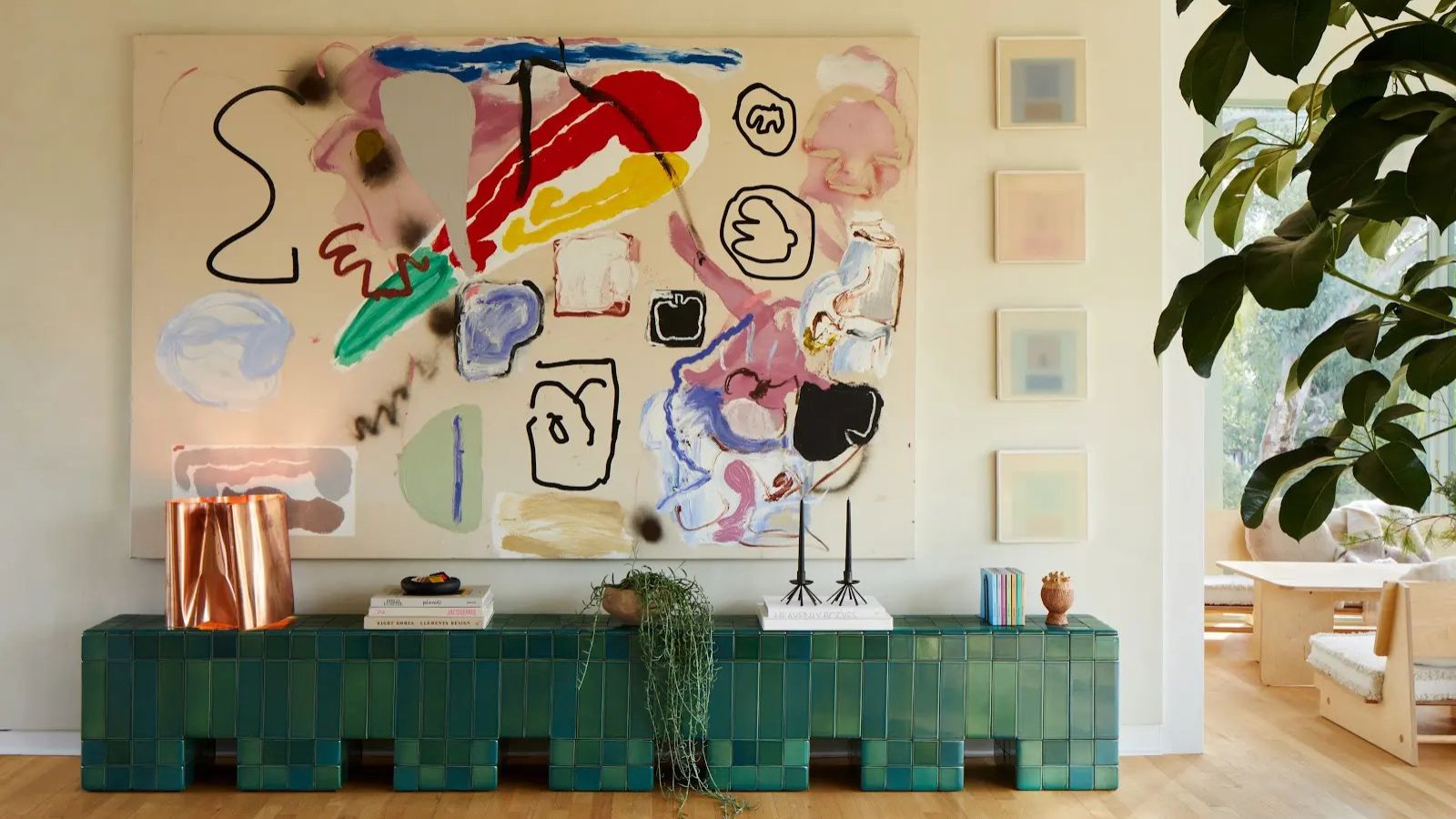
When faced with a blank wall, the possibilities for turning it into a statement piece are limitless. Whether you're working with a small city apartment or a sprawling country home, this design challenge calls for a mix of creativity, strategy, and personal style.
While a bare wall can sometimes feel minimalistic and refreshing, especially in a room filled with bold furniture and eye-catching decor, it can also risk feeling dull and neglected, or in smaller spaces, like a missed opportunity for added storage.
Designers universally agree that a thoughtfully adorned wall can completely transform the atmosphere of a room. So we asked five different designers, with different interior design styles how they would approach transforming a blank wall.
1. Bespoke storage solutions
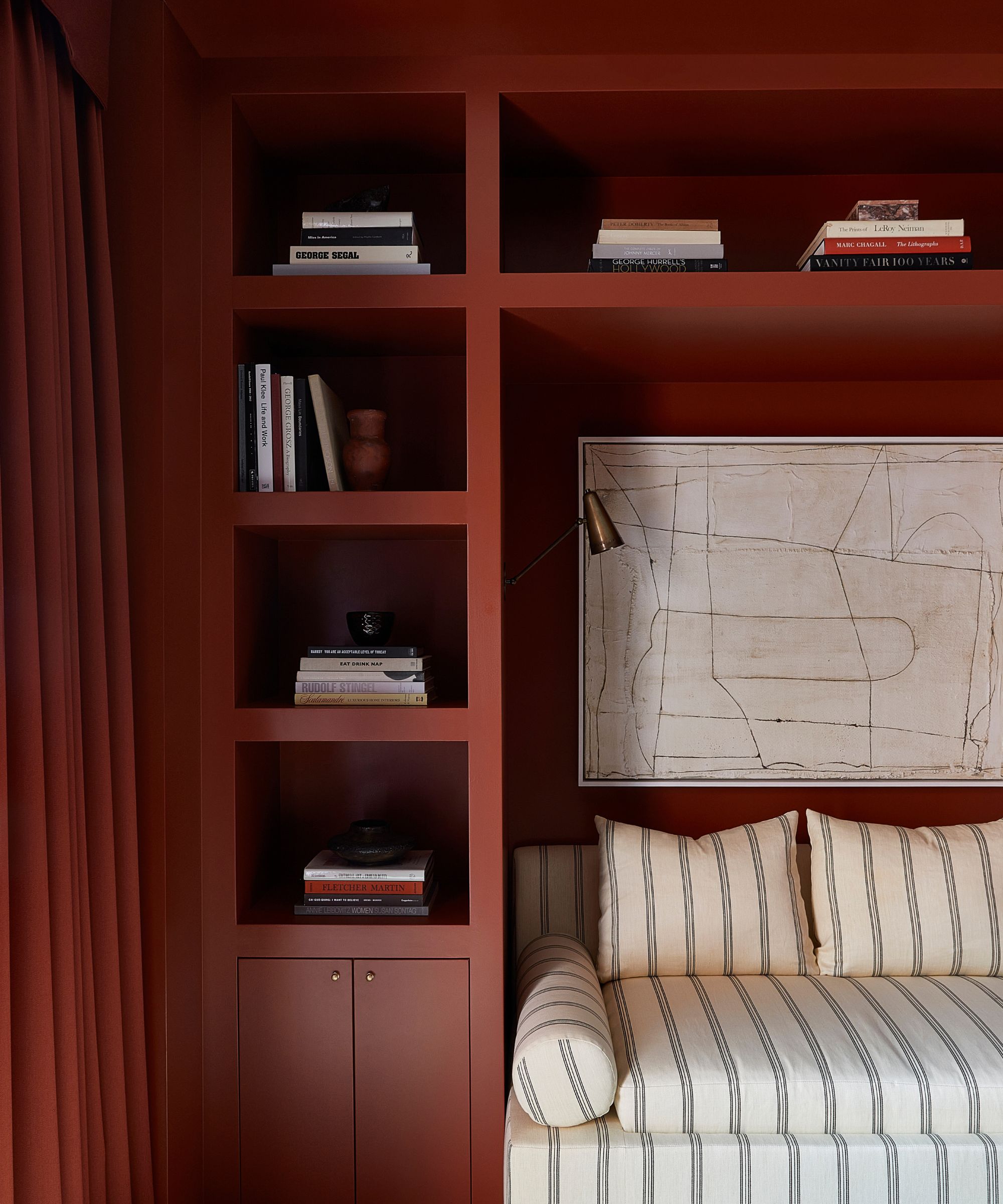
In small spaces like guest bedrooms or home offices, utilizing blank walls is a smart way to maximize space without encroaching on that valuable floor space.
In compact spaces, every square inch matters, and built-in shelving provides an efficient solution for storing and displaying all your possessions, whether it's books, decor, or accessories without cluttering the space with additional furniture.
As designer Wendy Labrum notes, 'One creative and practical use of a blank wall is to build out shelving for book and accessory display, as well as extra storage space in cabinetry. It’s a great opportunity to create a cozy nook with task lighting for reading and to showcase a favorite piece of art. Introduce a rich plaster or paint color on both the walls and ceiling with tonal drapery fabric to tie it all together.'
To finish things off, enjoy the fun of customization. There are endless possibilities from a wide range of paint effects and colors, and even the details like handles to reflect your own style. These little elements can be the thing that ties the whole look together.
When choosing color, painting the shelving or cabinetry in a bold or rich hue that complements your overall design scheme can add a joyful splash of personality and bring the entire space to life.
2. Go large with oversize artwork
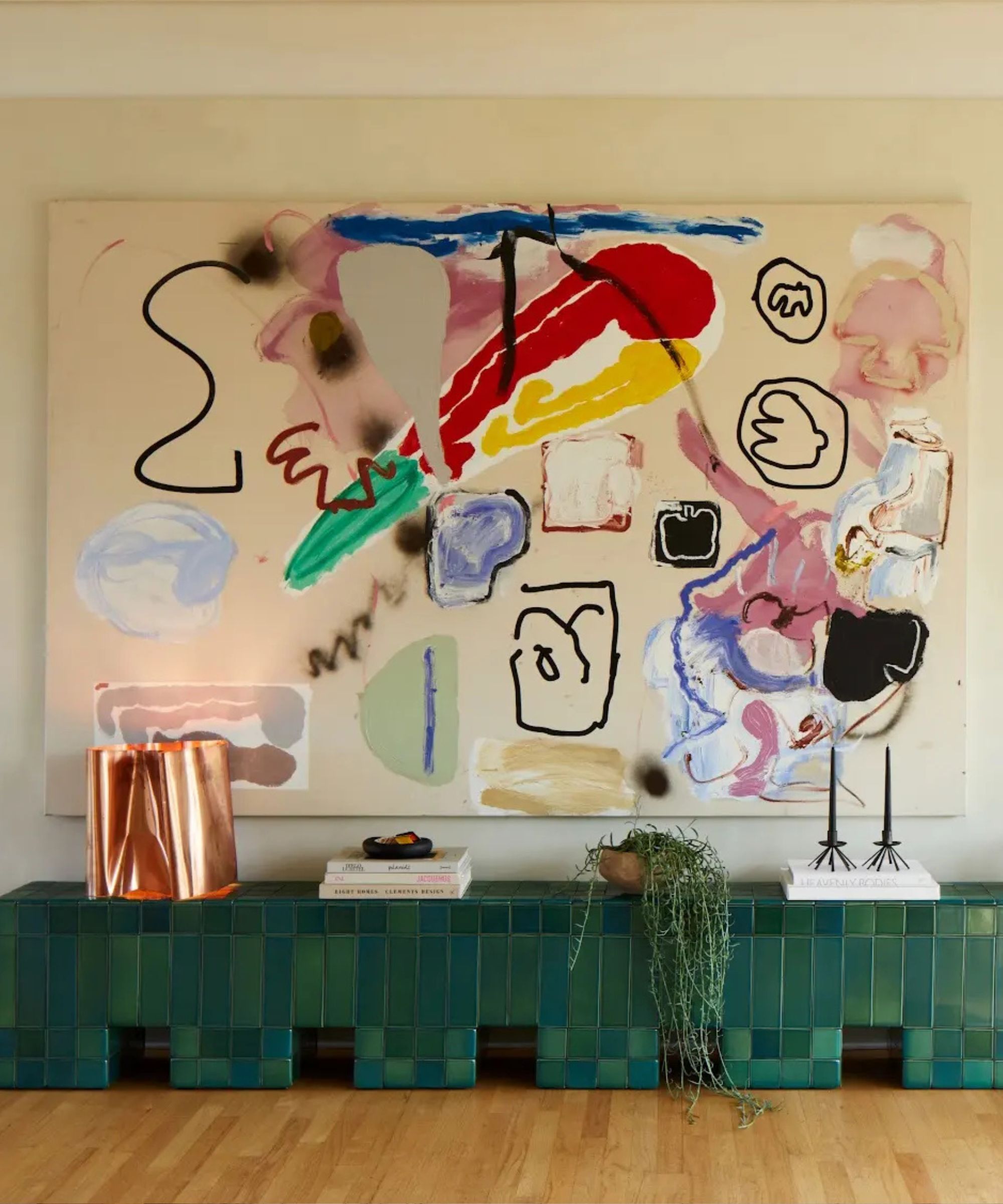
A grand room demands a grand statement, and large-scale artwork is the perfect solution for transforming a blank wall. In spacious areas, scale is key, larger art pieces not only complement the room's size but also make a bold, impactful statement.
As Kristina Khersonsky, founder of Studio Keeta explains, 'A common interior dilemma is a large blank wall that may not have an obvious and functional purpose but feels like a waste to leave unused. A great starting point is a large piece of art, and don’t be afraid of scale. It creates a backdrop and automatically holds down the area, continuing to highlight how large it is without making it feel awkward. People tend to go for a gallery wall style of smaller pieces, but that actually lends to the space feeling cluttered and small. Go big with art!'
Whether you’re going for modern, traditional, or something more eclectic, a big, bold piece of art ties everything together beautifully. Plus, large-scale art keeps the space feeling streamlined and focused, unlike smaller decor or a gallery wall, that can sometimes make a room feel too busy and cluttered.
Decorating with artwork is the perfect way to load a space with personality, color, and style in one simple, impactful statement.
3. Add texture tapestry
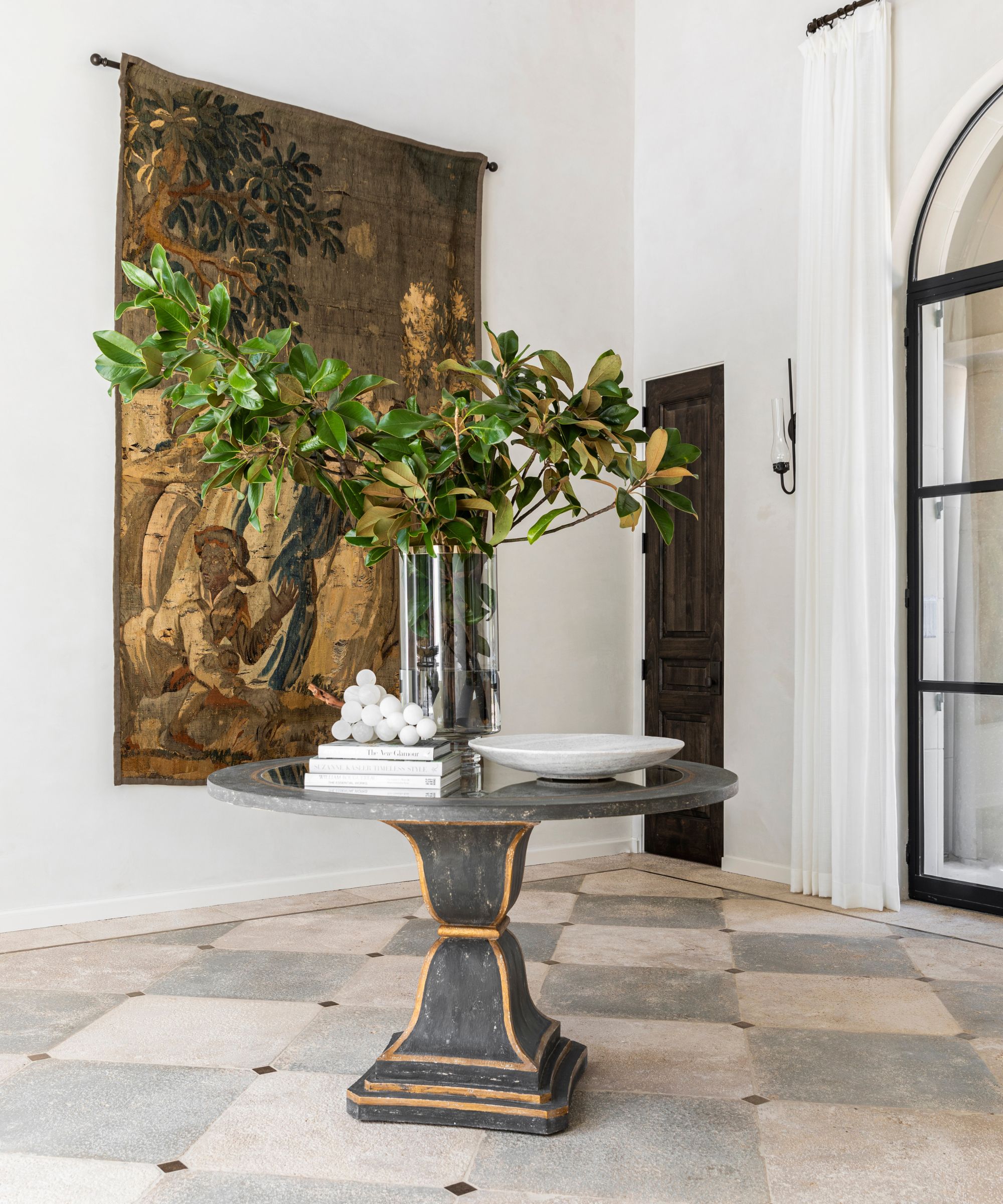
If you're looking to add texture and warmth to a blank wall, a tapestry might be the perfect solution. While we often associate tapestries with historic palaces and stately homes, these handwoven treasures can add work in almost any type of space, making them a versatile alternative to traditional artwork. Tapestries offer the large-scale impact of a painting but with a softer, more tactile twist.
In her design, interior designer Marie Flanigan, chose a tapestry for its timeless appeal, stating, ‘Covering a blank wall with an antique tapestry brings an incredible layer of texture and depth, transforming an empty space into one filled with history and character. There’s an unexpected beauty in seeing rich, handwoven patterns where a simple blank wall once stood, creating an artful focal point that feels timeless. Plus, it’s a unique way to infuse warmth and personality into your home, grounding the space with a sense of story and heritage.’
Beyond traditional interiors, tapestries work wonderfully in contemporary settings too, bringing warmth, texture and impactful visual interest to modern spaces which can sometimes appear more stark.
There are plenty of modern tapestry designs that fit within contemporary designs, but incorporating a traditional piece into a contemporary scheme can also add a striking, unexpected touch, especially when juxtaposed with contemporary furniture in a space that features historical architectural elements.
4. Set the scene with a large scale mural
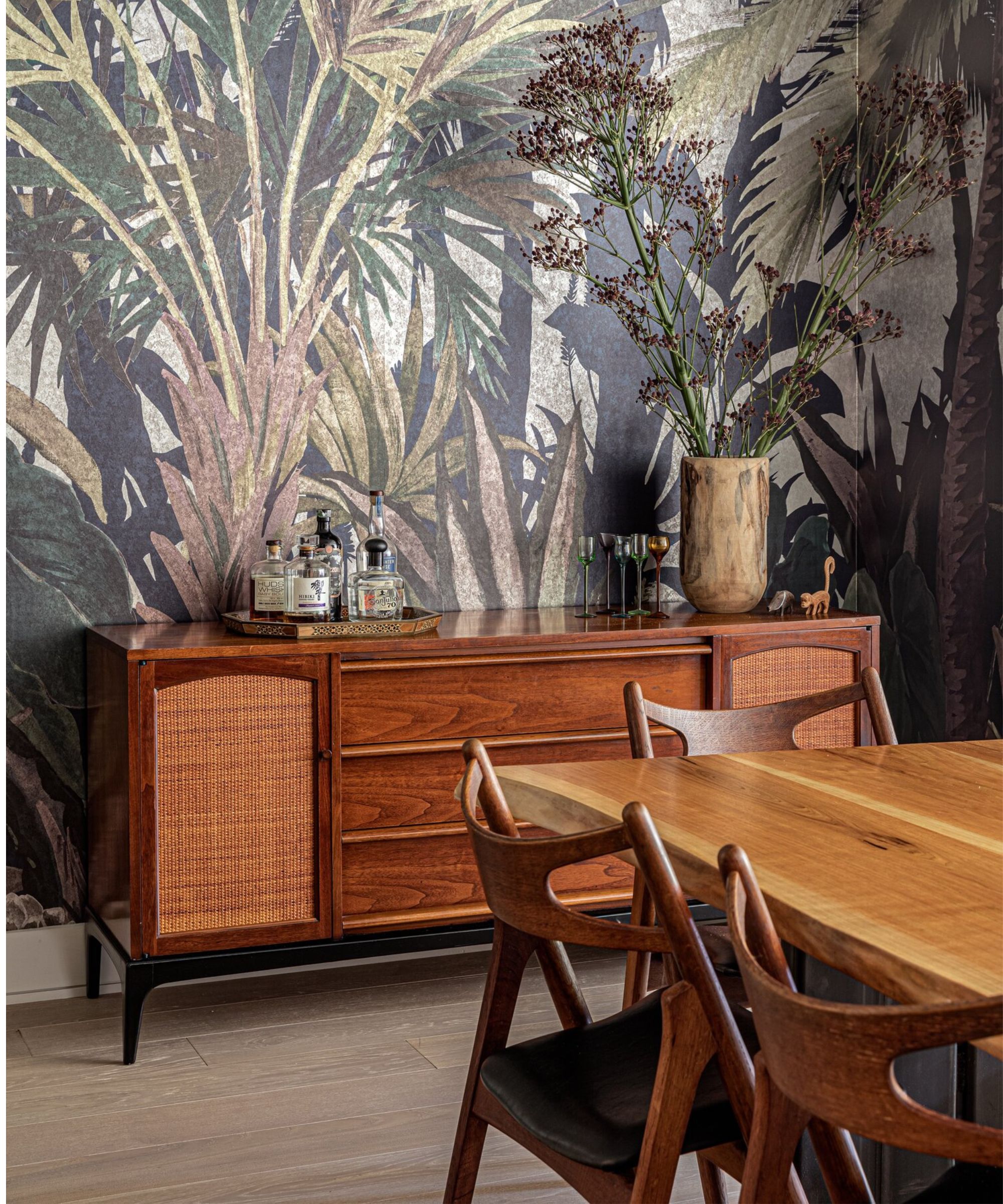
If you're aiming for a cohesive, themed look in your space, a mural is a bold and dramatic way to make a big statement on blank walls!
Unlike wallpaper, which features a repeating pattern, a mural is a large-scale, single-scene artwork that covers an entire wall (or even ceiling) without repetition. Its expansive nature makes it perfect for creating a striking focal point and works as a backdrop for the rest of the design.
As interior designer Becky Shea notes, 'When you have a blank wall in a home, a mural is a beautiful way to introduce an artistic element that feels intentional yet semi-permanent. It’s especially useful when you want to create a sense of depth or highlight a design theme in a room. For our Brazilian-inspired design, we collaborated with Phillip Jeffries to use their Arboretum collection, which brought the lush tones of the Amazon rainforest into the room, grounding the space and harmonizing with the rich wood finishes and vintage leathers.'
The wow factor of a mural is undeniable, with endless possibilities from landscapes and botanical scenes to abstract design and classical themes, allowing them to complement virtually any interior style. A mural injects a serious dose of personality, story, and life into a room in a way few other design elements can.
5. Intricate painted designs
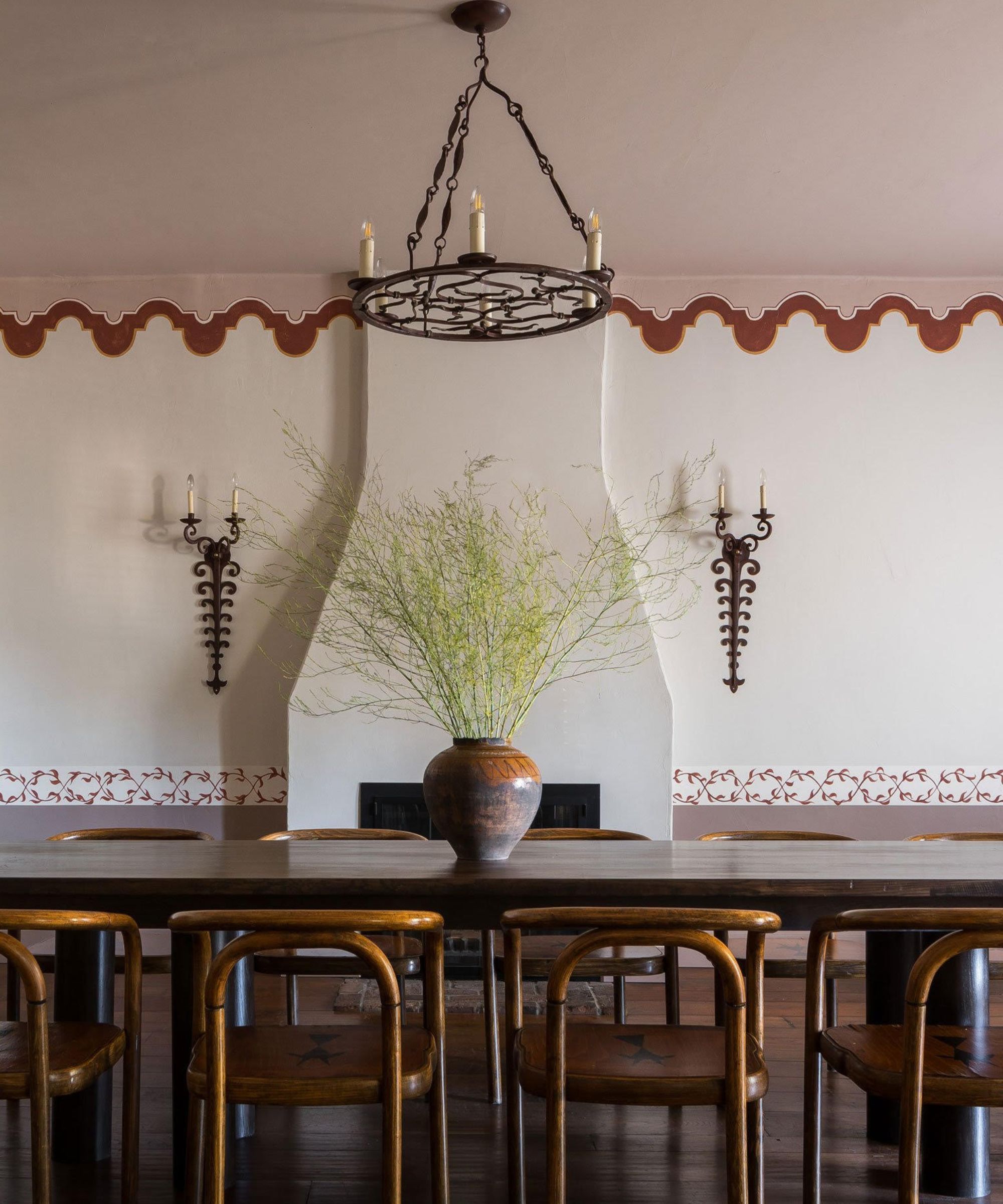
Painting a wall in a solid color is a classic choice, but if you're seeking something more dynamic and personal, a hand-painted motif or decorative design can create a truly bespoke look that feels authentic to your space. Unlike wallpapers or murals, hand-painted designs offer a level of customization and creativity that transforms a room into a reflection of your style.
From bold, modern stripes in vibrant colors to intricate hand-painted borders, exploring decorative paint ideas opens up endless design possibilities. Chalk paints are particularly well-suited for this kind of work, and you have complete control over the scale, pattern, and color, whether you prefer something subtle or statement-making.
Austin Carrier and Alex Mutter-Rottmayer, chief designers at Hommeboys, exemplify this in their stunning dining room design. They explain, 'Taking inspiration from both ancient and traditional interiors, paint can be used for more than just covering a wall with a wash of color. Paint can be used more decoratively to give architecture and intrigue to a space, as well as in lieu of wallcoverings. Hand-painted murals and embellishments can give a level of whimsy and personalization to a home.'
This versatility allows you to highlight architectural details like fireplaces, doors, and windows or simply add an interesting and unique motif to a bare wall, with complete freedom to choose colors that complement your décor. And whilst creating a striking design on a wall can be time-consuming and requires skill, it's far easier to update than wallpaper, allowing you to change it with ease as your room evolves over time.
Sometimes a blank wall is best left as just that, but the majority of the time they benefit from being filled with something that's going to bring character to a room, make a statement or create a focal point or even add something practical.







